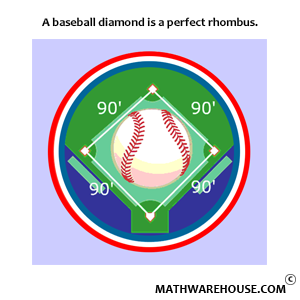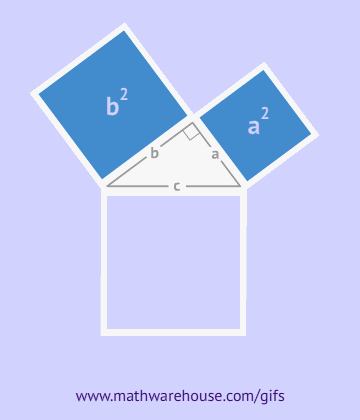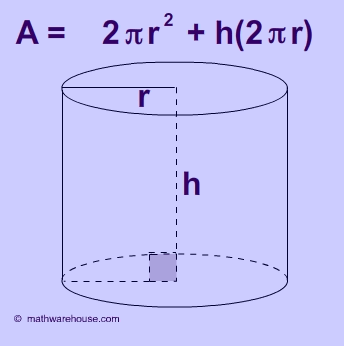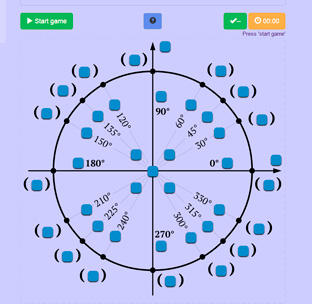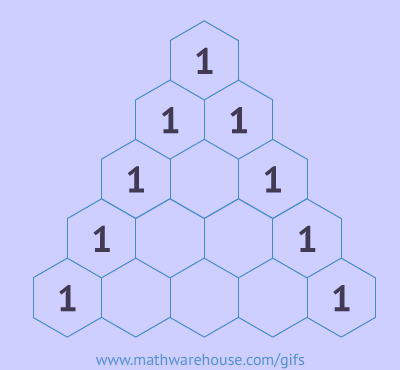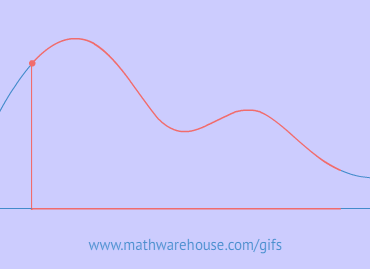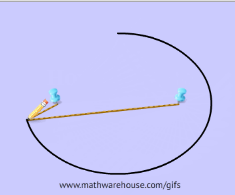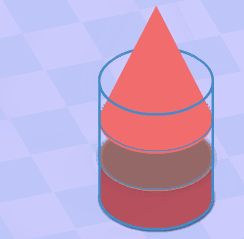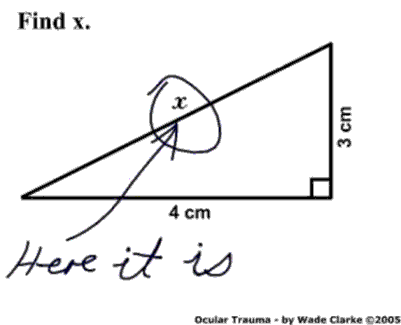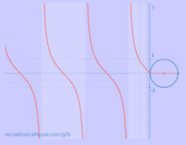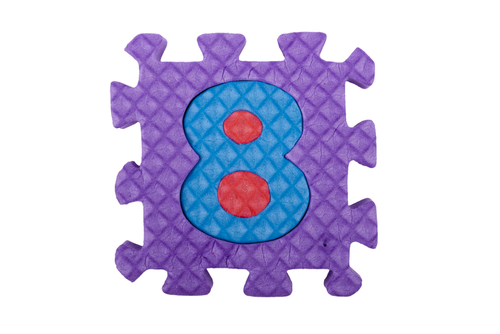
Error : Please Click on "Not a robot", then try downloading again.
If the limit of a rational function produces a 00 form...
- factor the numerator and denominator,
- divide out the common factor(s),
- then re-evaluate the limit .
Examples
The Limit Exists
Example 1
Evaluate lim
Step 1
Confirm that the limit has an indeterminate form.
\displaystyle \lim_{x\to -3}\frac{x^2+x-6}{x^2+8x+15} = \frac{(-3)^2+(-3) - 6}{(-3)^2+8(-3)+15} = \color{red}{ \frac 0 0}
Since \frac{0}{0} is an indeterminate form, the limit may (or may not) exist. We have more work to do.
Step 2
Since the function is rational, we can try factoring both the numerator and denominator to identify common factors.
\begin{align*}%
\lim_{x\to-3}\frac{x^2+x-6}{x^2+8x+15}
%
& = \lim_{x\to-3}\frac{{\color{blue}(x+3)}(x-2)}{{\color{blue}(x+3)}(x+5)} \\
%
& = \lim_{x\to-3}\frac{x-2}{x+5}
\end{align*}
Step 3
Evaluate the simpler limit .
\displaystyle \lim_{x\to-3}\frac{x-2}{x+5} = \frac{-3-2}{-3+5} = -\frac 5 2
Anwser
\displaystyle \lim_{x\to-3}\frac{x^2+x-6}{x^2+8x+15} = -\frac 5 2


The Limit Doesn’t Exist
Example 2
Evaluate: \displaystyle \lim_{x\to4}\frac{2x^2-7x-4}{x^3-8x^2+16x}
Step 1
Confirm the limit has an indeterminate form.
\lim_{x\to4}\frac{2x^2-7x-4}{x^3-8x^2+16x} = \frac{2(4)^2-7(4)-4}{(4)^3-8(4)^2+16(4)} = \color{red}{ \frac 0 0}
Since \frac{0}{0} is an indeterminate form, the limit may (or may not) exist. We have more work to do.
Step 2
Since the function is rational, try factoring to find any common factors.
\begin{align*}
\lim_{x\to4}\frac{2x^2-7x-4}{x^3-8x^2+16x} & = \lim_{x\to4}\frac{{\color{blue}(x-4)}(2x+1)}{x{\color{blue}(x-4)}(x-4)} \\
%
& = \lim_{x\to4}\frac{2x+1}{x(x-4)}
\end{align*}
Step 3
Evaluate the simpler limit .
\lim_{x\to4}\frac{2x+1}{x(x-4)} = \frac{2(4) + 1}{4(4-4)} = \frac 9 0
Anwser
\displaystyle \lim_{x\to4}\,\frac{2x^2-7x-4}{x^3-8x^2+16x} does not exist.
Practice Problems
Step 1
Confirm the limit has an indeterminate form.
$$
\displaystyle \lim_{x\to2}\frac{x^2 + 5x -14}{x^2-4} = \frac{(2)^2+5(2)-14}{(2)^2-4}=\color{red}{ \frac 0 0}
$$
Step 2
Find and divide out any common factors.
$$
\begin{align*}
\lim_{x\to2}\frac{x^2 + 5x -14}{x^2-4} & = \lim_{x\to2} \frac{(x+7){\color{blue}(x-2)}}{(x+2){\color{blue}(x-2)}} \\
%
& = \lim_{x\to2} \frac{x+7}{x+2}
\end{align*}
$$
Step 3
Evaluate the simpler limit .
$$\displaystyle \lim_{x\to2} \frac{x+7}{x+2} = \frac{2+7}{2+2} = \frac 9 4$$.
Step 4
$$\displaystyle \lim_{x\to2}\frac{x^2 + 5x -14}{x^2-4} = \frac 9 4$$.
Step 1
Confirm the limit has an indeterminate form.
$$
\displaystyle \lim_{x\to -1} \frac{x^2-4x-5}{x^2+10x+9} = \frac{(-1)^2-4(-1)-5}{(-1)^2+10(-1)+9} = \frac 0 0
$$
Step 2
Find and divide out any common factors.
$$
\begin{align*}
\lim_{x\to -1} \frac{x^2-4x-5}{x^2+10x+9} & = \lim_{x\to-1} \frac{(x-5){\color{blue}(x+1)}}{(x+9){\color{blue}(x+1)}} \\
%
& = \lim_{x\to-1} \frac{x-5}{x+9} \\
\end{align*}
$$
Step 3
Evaluate the simpler limit .
$$\displaystyle \lim_{x\to-1} \frac{x-5}{x+9} = \frac{-1-5}{-1+9}=\frac{-6}{8} = -\frac 3 4$$.
Step 4
$$\displaystyle \lim_{x\to -1} \frac{x^2-4x-5}{x^2+10x+9} = -\frac 3 4$$.


Step 1
Confirm the limit has an indeterminate form.
$$
\displaystyle \lim_{x\to\frac 1 3} \frac{3x^2-7x+2}{3x^2+5x-2}%
= \frac{3(\frac 1 3)^2-7(\frac 1 3) +2}{3(\frac 1 3) +5(\frac 1 3)-2}%
= \color{red}{ \frac 0 0}%
$$
Step 2
Find and divide out any common factors.
$$
\begin{align*}
\lim_{x\to\frac 1 3} \frac{3x^2-7x+2}{3x^2+5x-2} & = \lim_{x\to\frac 1 3} \frac{{\color{blue}(3x-1)}(x-2)}{{\color{blue}(3x-1)}(x+2)} \\
%
& = \lim_{x\to\frac 1 3} \frac{x-2}{x+2}
\end{align*}
$$
Step 3
Evaluate the simpler limit .
$$\displaystyle \lim_{x\to\frac 1 3} \frac{x-2}{x+2} = \frac{\frac 1 3 - 2}{\frac 1 3 + 2} = \frac{-\frac 5 3}{\frac 7 3} = -\frac 5 7$$.
Step 4
$$\displaystyle \lim_{x\to\frac 1 3} \frac{3x^2-7x+2}{3x^2+5x-2} = - \frac 5 7$$.
Step 1
Confirm the limit has an indeterminate form.
$$
\displaystyle \lim_{x\to-8} \frac{2x^2+19x+24}{2x^2+15x-8}%
= \frac{2(-8)^2+19(-8)+24}{2(-8)^2+15(-8)-8}
= \frac 0 0
$$
Step 2
Find and divide out any common factors.
$$
\begin{align*}
\lim_{x\to-8} \frac{2x^2+19x+24}{2x^2+15x-8} & = \lim_{x\to-8} \frac{{\color{blue}(x+8)}(2x+3)}{{\color{blue}(x+8)}(2x-1)} \\
%
& = \lim_{x\to-8} \frac{2x+3}{2x-1}
\end{align*}
$$
Step 3
Evaluate the simpler limit .
$$\displaystyle \lim_{x\to-8} \frac{2x+3}{2x-1} = \frac{2(-8)+3}{2(-8)-1} = \frac{-13}{-17} = \frac{13}{17}$$.
Step 4
$$\displaystyle \lim_{x\to-8} \frac{2x^2+19x+24}{2x^2+15x-8} = \frac{13}{17}$$.
Step 1
Confirm the limit has an indeterminate form.
$$
\displaystyle \lim_{x\to6} \frac{x^2-3x-18}{x^2-12x+36} = \frac{(6)^2-3(6)-18}{(6)^2-12(6)+36} = \color{red}{ \frac 0 0}
$$
Step 2
Find and divide out any common factors.
$$
\begin{align*}
\lim_{x\to6} \frac{x^2-3x-18}{x^2-12x+36} & = \lim_{x\to6} \frac{(x+3){\color{blue}(x-6)}}{{\color{blue}(x-6)}(x-6)}\\
%
& = \lim_{x\to6} \frac{x+3}{x-6}
\end{align*}
$$
Step 3
Evaluate the simpler limit .
$$\displaystyle \lim_{x\to6} \frac{x+3}{x-6} = \frac{6 + 3}{6 -6} = \frac 9 0$$.
Step 4
$$\displaystyle \displaystyle \lim_{x\to6} \frac{x^2-3x-18}{x^2-12x-36}$$ does not exist.


Step 1
Confirm the limit has an indeterminate form.
$$
\begin{align*}%
\displaystyle \lim_{x\to-5}\,%
\frac{2x^2+13x+15}{x^3+10x^2+25x}%
%
& = \frac{2(-5)^2+13(-5)+15}{(-5)^3+10(-5)^2+25(-5)}%
\\[6pt]
%
& = \frac{50 - 65 + 15}{-125 + 250 - 125}%
\\[6pt]
%
& = \frac 0 0
\end{align*}
$$
Step 2
Find and divide out any common factors.
$$
\begin{align*}
\lim_{x\to-5}\,%
\frac{2x^2+13x+15}
{x^3+10x^2+25x}%
%
& = \lim_{x\to-5}\,%
\frac{%
\blue{(x+5)}(2x+3)%
}
{%
x\blue{(x+5)}(x+5)%
}
\\[6pt]
%
& = \lim_{x\to-5}\,%
\frac{2x+3}
{x(x+5)}%
\end{align*}
$$
Step 3
Evaluate the simpler limit .
$$
\displaystyle\lim_{x\to-5}\,%
\frac{2x+3}{x(x+5)}%
%
= \frac{2(-5) + 3}{-5(-5+5)}%
%
= \frac{-7} 0
$$.
Step 4
$$
\displaystyle \lim_{x\to-5}\,%
\frac{2x^2+13x+15}{x^3+10x^2+25x}%
$$ does not exist.
Step 1
Confirm the limit has an indeterminate form.
$$
\begin{align*}%
\lim_{x\to -\frac 2 5}\,%
\frac{15x^3+x^2-2x}
{25x^2 + 20x + 4}
%
& = \frac{%
15\left(-\frac 2 5\right)^3+\left(-\frac 2 5\right)^2-2\left(-\frac 2 5\right)%
}
{%
25\left(-\frac 2 5\right)^2 + 20\left(-\frac 2 5\right) + 4
}
\\[6pt]
%
& = \frac{%
15\left(-\frac 8 {125}\right)+\frac 4 {25}+\frac 4 5%
}
{%
25\left(\frac 4 {25}\right) - 8 + 4
}
\\[6pt]
%
& = \frac{%
3\left(-\frac 8 {25}\right)+\frac 4 {25}+\frac{20}{25}%
}
{%
4 - 8 + 4
}\\[6pt]
%
& = \frac 0 0
\end{align*}
$$
Step 2
Find and divide out any common factors.
$$
\begin{align*}
\lim_{x\to -\frac 2 5}\,%
\frac{15x^3+x^2-2x}
{25x^2 + 20x + 4}%
%
& = \lim_{x\to -\frac 2 5}\,%
\frac{%
x\blue{(5x+2)}(3x-1)%
}
{%
\blue{(5x+2)}(5x+2)%
}
\\[6pt]
%
& = \lim_{x\to -\frac 2 5}\,%
\frac{%
x(3x-1)%
}
{%
5x+2%
}
\end{align*}
$$
Step 3
Evaluate the simpler limit .
$$
\begin{align*}%
\lim_{x\to -\frac 2 5}\,%
\frac{ x(3x-1)}
{5x+2}%
%
& = \frac{%
-\frac 2 5\left(%
3\left(-\frac 2 5\right) - 1%
\right)
}
{%
5\left(-\frac 2 5\right) + 2
}
\\[6pt]
%
& = \frac{%
-\frac 2 5\left(%
-\frac 6 5 - \frac 5 5%
\right)
}
{%
-2 + 2
}
\\[6pt]
%
& = \frac{22/25} 0
\end{align*}
$$.
Step 4
$$
\displaystyle \lim_{x\to -\frac 2 5}\,%
\frac{15x^3+x^2-2x}
{25x^2 + 20x + 4}
$$ does not exist.

Error : Please Click on "Not a robot", then try downloading again.



